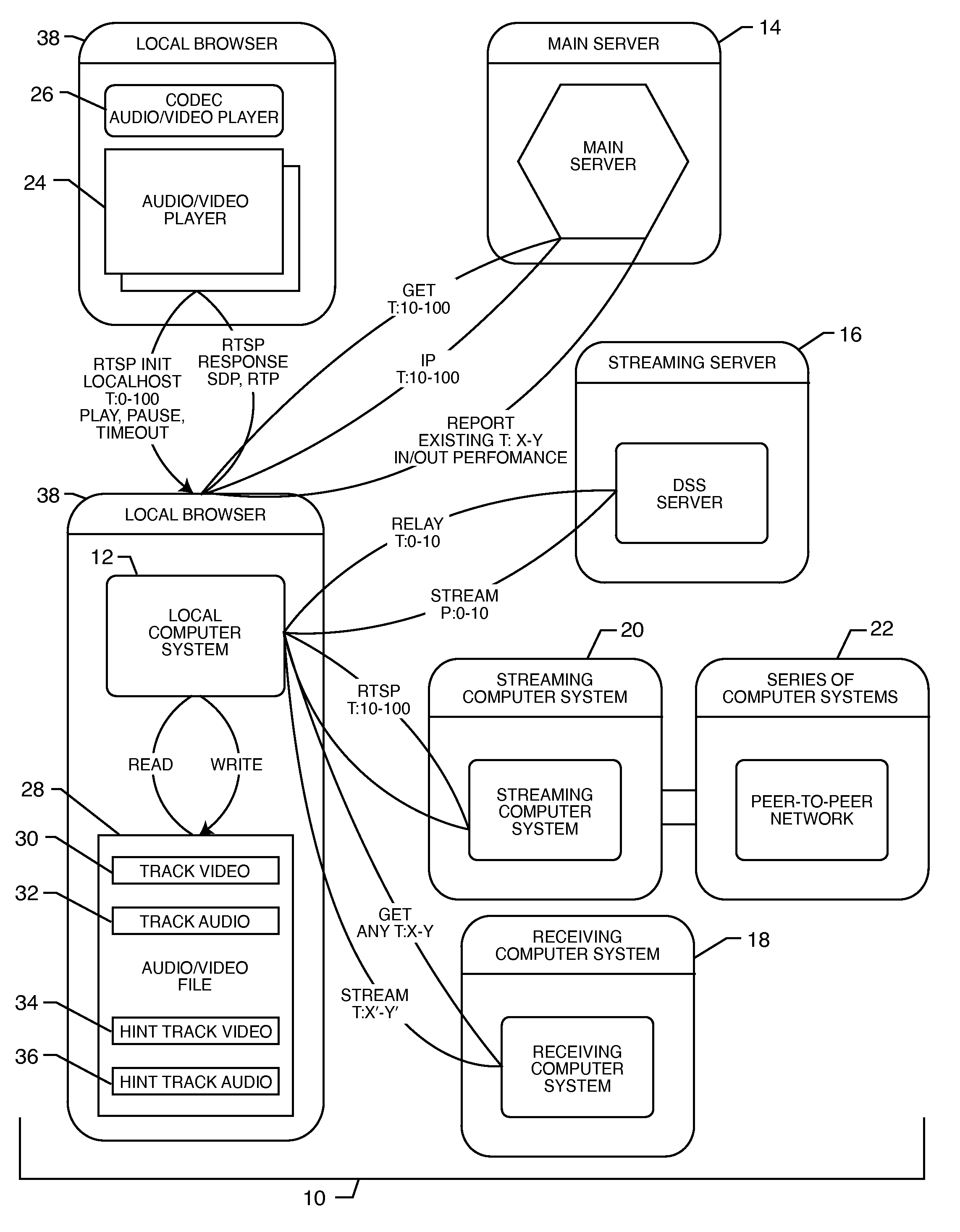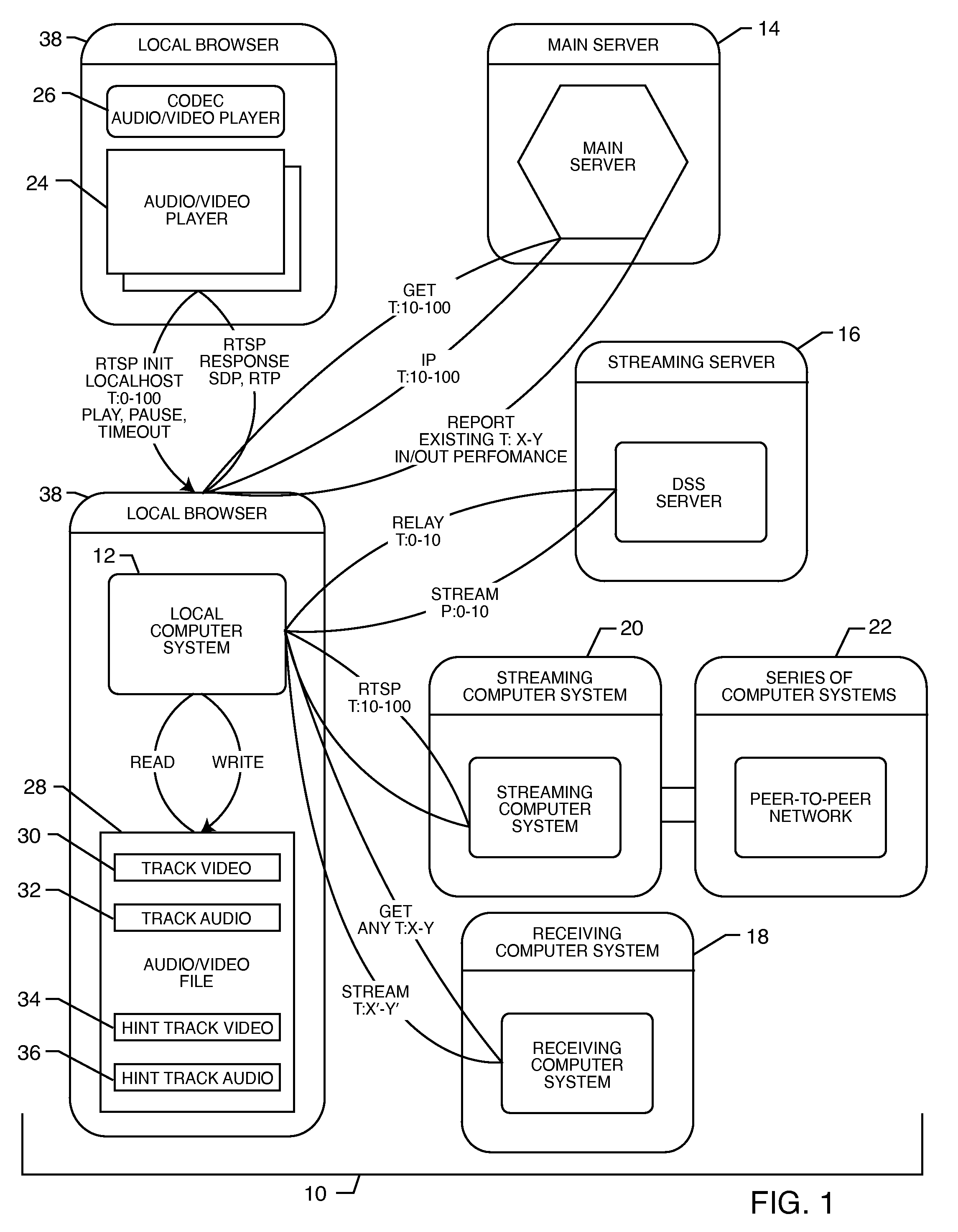Process for streaming media data in a peer-to-peer network
a peer-to-peer network and media data technology, applied in the field of video streaming technology, can solve the problems of high probability of stopping after only a few seconds, significant delays, and high bandwidth and cpu power requirements, and achieve the effect of efficiently connecting a local computer and regulating and optimizing data transfer
- Summary
- Abstract
- Description
- Claims
- Application Information
AI Technical Summary
Benefits of technology
Problems solved by technology
Method used
Image
Examples
Embodiment Construction
[0025]As shown in the exemplary drawing for purposes of illustration, the present disclosure of a peer-to-peer (P2P) architecture technology for streaming video media is referred to generally by the reference numeral 10. Turning now to the representative FIGURE in the specification, FIG. 1 illustrates the P2P architecture technology for streaming video media 10 including a local computer system 12, a main server 14, a streaming server 16, a receiving computer system 18, a streaming computer system 20, and a series of computer systems 22 interconnected via the P2P network. The P2P network of the present invention is designed to stream high definition, DVD quality, or otherwise high quality video and audio media to an end-user peer. It is preferred that the P2P network of the present invention use the RTSP protocol. But, the P2P network of the present invention could also use RTMP or any other general streaming audio, video or data protocols. Information transfer therefore uses time b...
PUM
 Login to View More
Login to View More Abstract
Description
Claims
Application Information
 Login to View More
Login to View More - R&D
- Intellectual Property
- Life Sciences
- Materials
- Tech Scout
- Unparalleled Data Quality
- Higher Quality Content
- 60% Fewer Hallucinations
Browse by: Latest US Patents, China's latest patents, Technical Efficacy Thesaurus, Application Domain, Technology Topic, Popular Technical Reports.
© 2025 PatSnap. All rights reserved.Legal|Privacy policy|Modern Slavery Act Transparency Statement|Sitemap|About US| Contact US: help@patsnap.com


